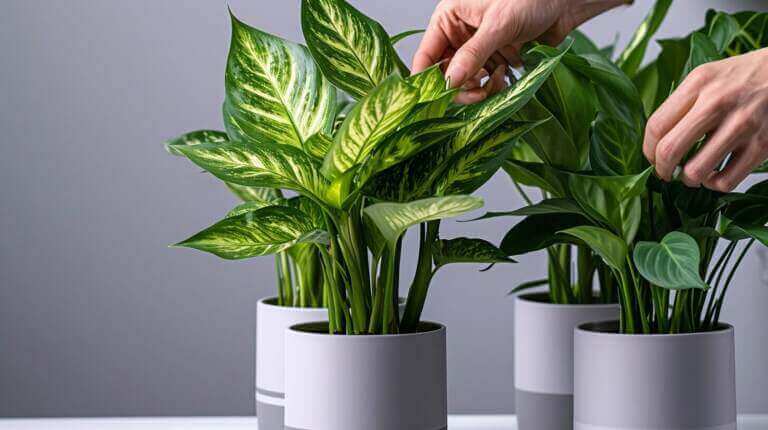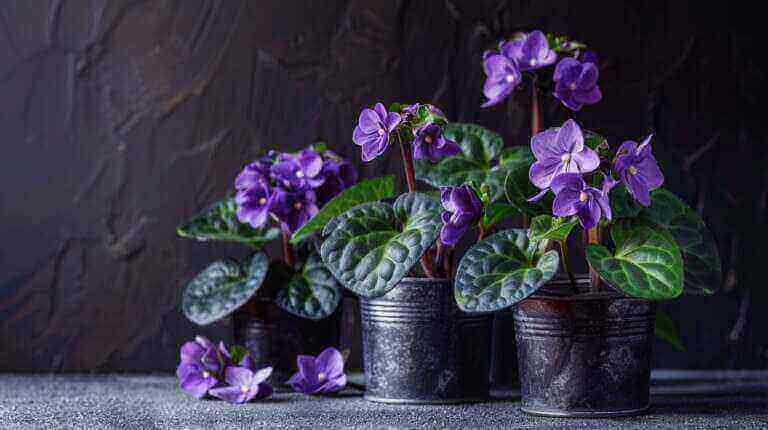Cast Iron Plant Leaves Turning Yellow or Brown: Fixes and Treatment
When the leaves of your cast iron plant start to turn brown or yellow, it can be a sign of various issues. One common cause is too much light. Cast iron plants prefer full shade and can develop yellow leaves with brown tips if they receive too much sun. Moving the plant to a shadier location is the recommended fix. Overwatering can also lead to brown or yellow leaves, as it can cause root rot. Proper watering techniques, such as the soak-and-dry method, can help prevent this. Other factors that can contribute to browning or yellowing leaves include poor growing conditions, temperature stress, overfertilizing, and age. Identifying the underlying cause and implementing the appropriate treatment can help revive your cast iron plant.
Key Takeaways:
- Too much light can cause cast iron plant leaves to turn brown or yellow.
- Overwatering can lead to root rot and brown or yellow leaves.
- Poor growing conditions, overfertilizing, and aging can also contribute to leaf discoloration.
- Moving the plant to a shadier location and following proper watering techniques can help prevent and treat brown or yellow leaves.
- Regular pruning of dead or dying leaves can help maintain the overall health of the plant.
How to Prevent Too Much Light on Cast Iron Plants
Cast iron plants prefer full shade and can suffer from yellow leaves with brown tips when exposed to too much sunlight. To prevent this issue, it’s important to provide adequate shade for your cast iron plant. Place the plant in an area that is shielded from direct sunlight throughout the day. If necessary, you can use curtains, blinds, or sheer fabric to filter the light and protect the plant. Additionally, positioning the plant away from windows or using sheer curtains can help diffuse the sunlight. Creating a suitable environment with low light conditions will help keep the leaves of your cast iron plant green and healthy.
| Methods to Prevent Too Much Light on Cast Iron Plants |
|---|
| 1. Find a shady spot: Place the plant in an area that is shielded from direct sunlight throughout the day. |
| 2. Use curtains or blinds: If necessary, use curtains, blinds, or sheer fabric to filter the light and protect the plant. |
| 3. Position away from windows: Position the plant away from windows or use sheer curtains to help diffuse the sunlight. |
Proper Watering Techniques for Cast Iron Plants
When it comes to caring for your cast iron plants, proper watering techniques are crucial to maintaining their health and preventing issues such as root rot. Follow these guidelines to ensure your cast iron plant receives the right amount of moisture:
- Use the soak-and-dry method: Allow the top half of the soil to dry out before watering the plant again. This technique helps prevent waterlogged soil and allows the roots to receive the proper amount of moisture.
- Check the soil moisture: Regularly monitor the moisture level of the soil by inserting your finger about an inch deep into the soil. If it feels dry, it’s time to water the plant. If it feels damp, wait a little longer.
- Ensure good drainage: Cast iron plants thrive in well-draining soil. Use a potting mix that promotes good drainage and choose a pot with drainage holes to allow excess water to escape.
- Establish a watering schedule: While the soak-and-dry method is effective, it’s important to establish a watering schedule that suits your plant’s needs. Aim to water your cast iron plant once every 7-10 days, adjusting the frequency based on environmental factors such as humidity and temperature.
By following these proper watering techniques, you can prevent overwatering and keep your cast iron plant healthy and vibrant.
Identifying and Treating Other Causes of Brown or Yellow Leaves
Aside from too much light and overwatering, there are various other factors that can contribute to the browning or yellowing of leaves in cast iron plants. It is crucial to address these issues promptly in order to revive the plant’s health and appearance.
Poor growing conditions, including improper temperature, watering, and feeding, can lead to leaf discoloration. Ensuring the right growing conditions is vital. Maintain an appropriate temperature range, avoiding extremes and drafts. Additionally, it is important to follow a balanced feeding schedule to provide the necessary nutrients.
Overfertilizing can also result in brown leaf edges and tips, as well as mineral buildup in the soil. Adjusting fertilizing practices and ensuring proper soil flushing can help remedy this problem. Monitoring the plant’s response and adjusting the fertilizing frequency and amount accordingly is essential for its well-being.
FAQ
Why are the leaves of my cast iron plant turning brown or yellow?
There can be various reasons for this, such as too much light, overwatering, poor growing conditions, temperature stress, overfertilizing, or natural aging of the plant.
Why are my cast iron plant leaves turning yellow?
The leaves on cast iron plants can turn yellow due to overwatering or underwatering. It’s important to water your cast iron plant when the top inch of soil is dry and ensure it’s planted in a pot with good drainage to prevent waterlogging.
What causes brown leaves on a cast iron plant?
Brown leaf tips on a cast iron plant can be a sign of a pest infestation, such as spider mites. It could also be due to a lack of water or humidity. Regularly check your plant for pests and adjust your watering schedule as needed.
How often should I fertilize my cast iron plant?
Fertilize your cast iron plant during the growing season (spring and summer) with a balanced houseplant fertilizer. Follow the instructions on the fertilizer package to avoid over-fertilizing, which can lead to plant problems.
When should I repot my cast iron plant?
Repot your cast iron plant when you notice that the plant has outgrown its pot or the growth rate has slowed down significantly. Spring and summer are the best times to repot as the plant is in its active growth phase.
How do I care for an Aspidistra Elatior?
Aspidistra Elatior, also known as the cast iron plant, is a popular indoor plant known for its dark green, glossy leaves. It’s a hardy plant that’s easy to care for, making it a favorite among house plant enthusiasts.
What are the optimal growing conditions for a cast iron plant?
Cast iron plants thrive in indirect light and prefer a well-draining soil. They can tolerate low light conditions, making them a great choice for indoor plants.







